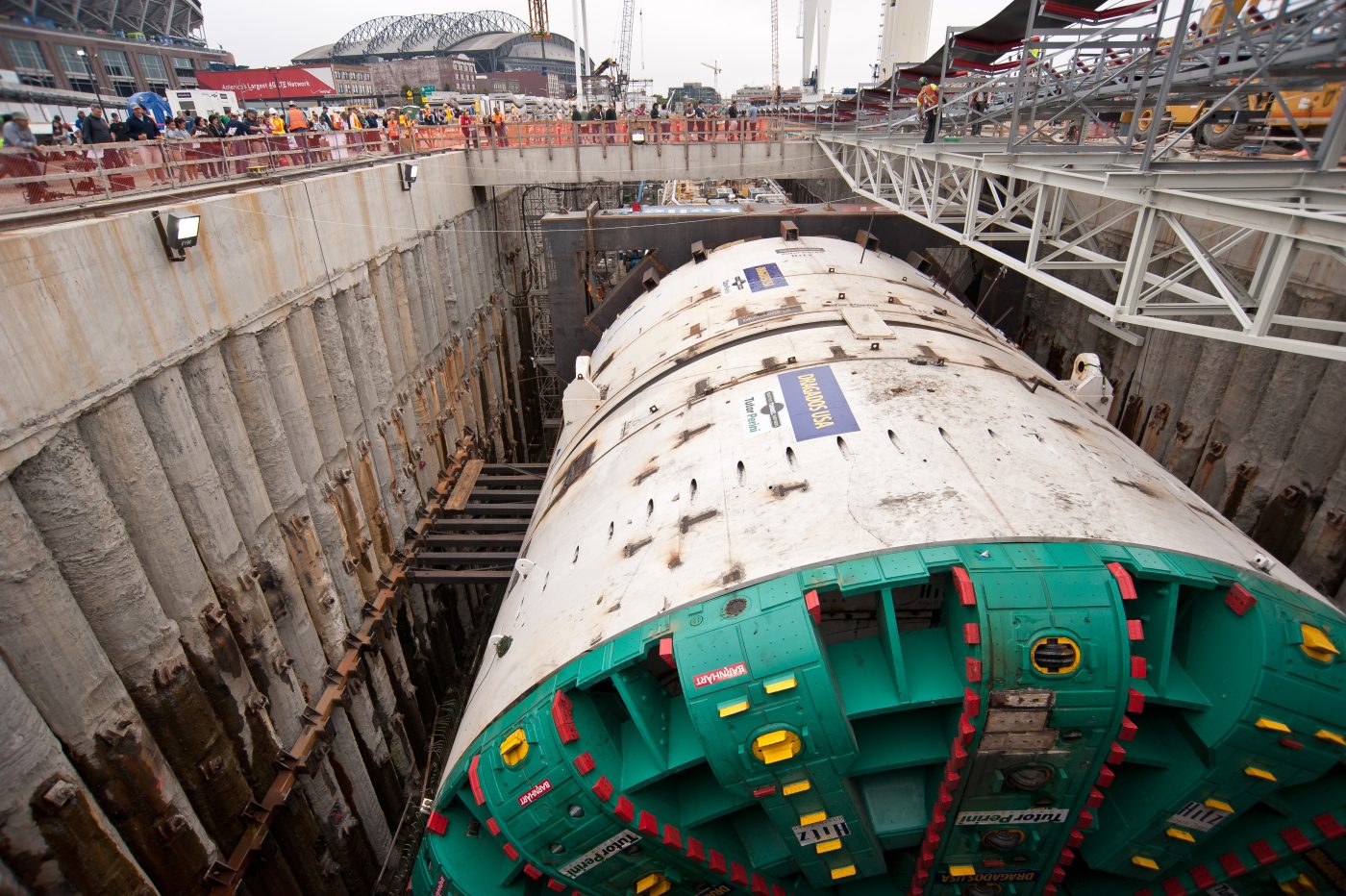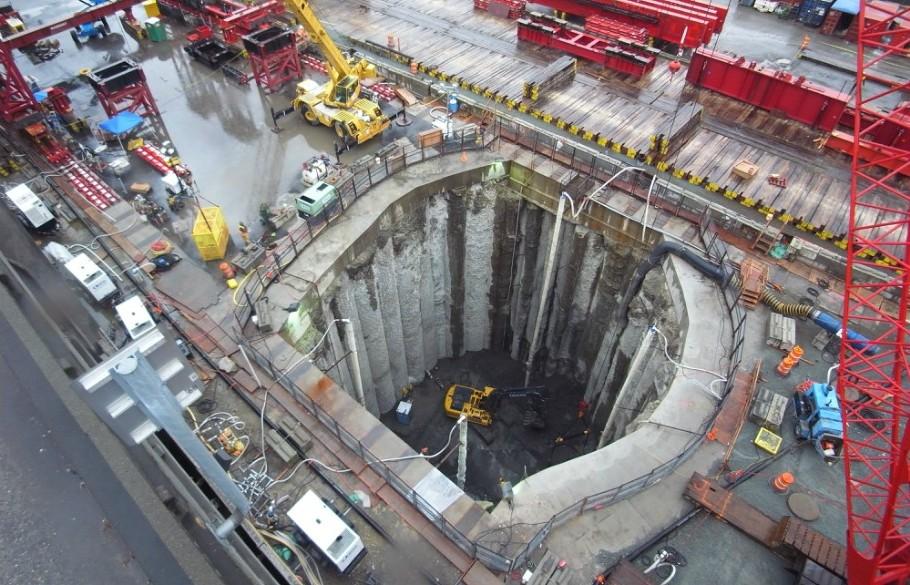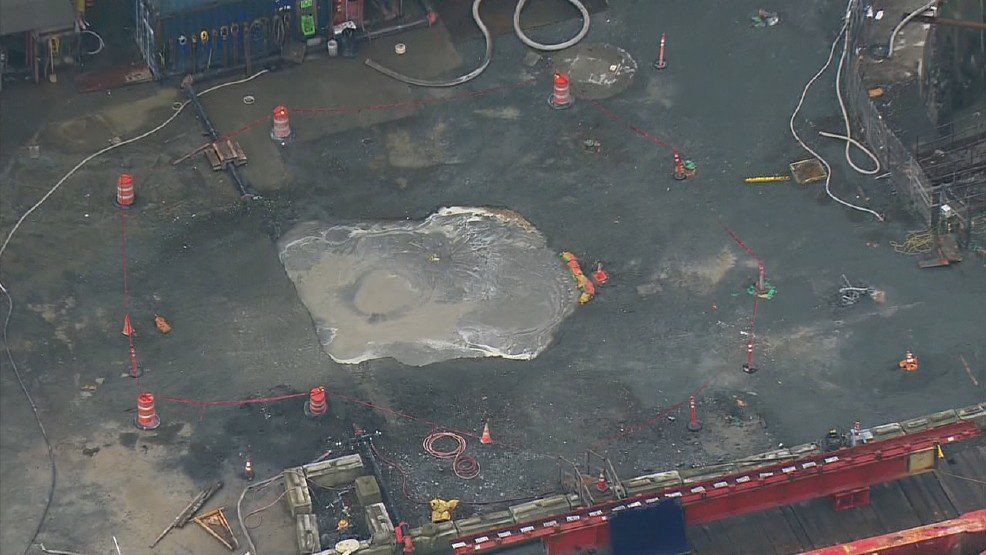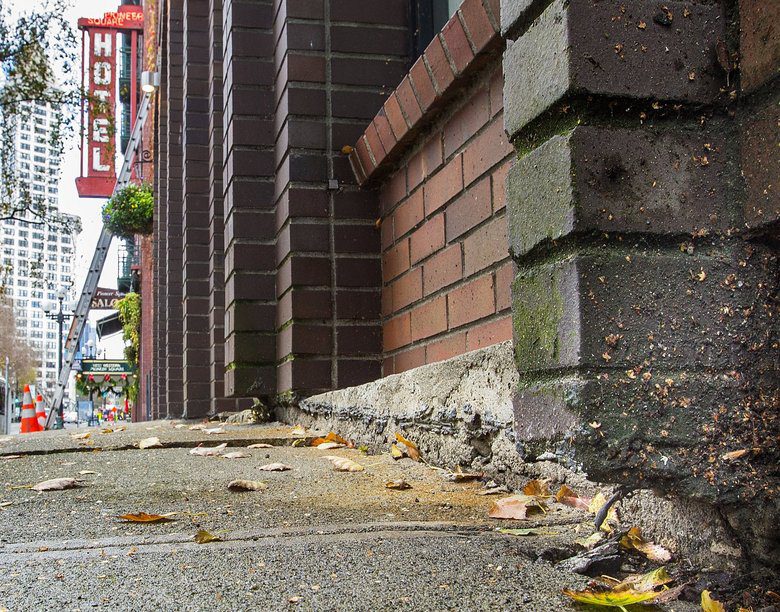Complete the form to request product details, pricing, schedule a demo, or to discuss an upcoming project.
Project Overview
3vG conducted an analysis on a replacement tunnel project in Seattle, WA. The City of Seattle began digging a 1.7 mile long, 57-foot diameter tunnel underneath its downtown core in July 2013 as part of a $2.1B civil engineering and infrastructure project to replace the Alaskan Way Viaduct. The world’s largest-diameter tunnel boring machine, nicknamed “Big Bertha”, stopped operating in December 2013 underneath Seattle’s historic Pioneer Square area.

In November 2014, crews began digging a 120-foot deep vertical recovery pit to access and repair Big Bertha. A large amount of groundwater pumping took place from November 2014 to December 2015, leading to significant ground settlement, cracking, and other visible damage to neighboring buildings. A large sinkhole also formed approximately 35 feet from the recovery pit in January 2016, leading the Governor of the state to temporarily shut down the project.


Challenges
Solution/Results
3vG analyzed RADARSAT-2 images collected for a 20 km x 20 km area between February 2013 and August 2015 to measure ground displacement over time. The InSAR results show that the ground was relatively stable from February to December 2013, prior to Big Bertha becoming operational. From December 2013 to October 2014, the ground was displaced 10 – 20 mm along the route of Big Bertha. In November 2014, the ground suddenly began sinking significantly, with up to 60 mm of total displacement occurring over the next nine months.

Benefits
Conclusion
3vG can access SAR images for all major cities globally. Our clients are proactively using InSAR data to be informed on how their engineering construction projects are impacting the topography in and around the project sites. 3vG recommends incorporating InSAR monitoring services to any project involving tunneling, ground excavation, and large amounts of groundwater pumping.
